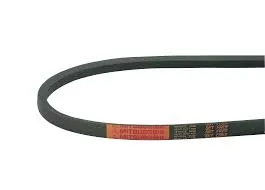- Arabic
- French
- Russian
- Spanish
- Portuguese
- Turkish
- Armenian
- English
- Albanian
- Amharic
- Azerbaijani
- Basque
- Belarusian
- Bengali
- Bosnian
- Bulgarian
- Catalan
- Cebuano
- Corsican
- Croatian
- Czech
- Danish
- Dutch
- Afrikaans
- Esperanto
- Estonian
- Finnish
- Frisian
- Galician
- Georgian
- German
- Greek
- Gujarati
- Haitian Creole
- hausa
- hawaiian
- Hebrew
- Hindi
- Miao
- Hungarian
- Icelandic
- igbo
- Indonesian
- irish
- Italian
- Japanese
- Javanese
- Kannada
- kazakh
- Khmer
- Rwandese
- Korean
- Kurdish
- Kyrgyz
- Lao
- Latin
- Latvian
- Lithuanian
- Luxembourgish
- Macedonian
- Malgashi
- Malay
- Malayalam
- Maltese
- Maori
- Marathi
- Mongolian
- Myanmar
- Nepali
- Norwegian
- Norwegian
- Occitan
- Pashto
- Persian
- Polish
- Punjabi
- Romanian
- Samoan
- Scottish Gaelic
- Serbian
- Sesotho
- Shona
- Sindhi
- Sinhala
- Slovak
- Slovenian
- Somali
- Sundanese
- Swahili
- Swedish
- Tagalog
- Tajik
- Tamil
- Tatar
- Telugu
- Thai
- Turkmen
- Ukrainian
- Urdu
- Uighur
- Uzbek
- Vietnamese
- Welsh
- Bantu
- Yiddish
- Yoruba
- Zulu
Nov . 29, 2024 14:29 Back to list
Automotive V Ribbed Belts for Enhanced Performance and Durability in Vehicle Applications
Understanding Automotive V Ribbed Belts Importance, Function, and Maintenance
Automotive V ribbed belts, often simply referred to as serpentine belts, are crucial components in modern vehicles. They play an integral role in the functioning of the engine and various auxiliary systems. Understanding their importance, function, and maintenance can help vehicle owners ensure a longer lifespan and optimal performance of their cars.
What is a V Ribbed Belt?
A V ribbed belt is a type of belt that features ribbed or grooved surfaces designed to fit snugly onto pulleys. Unlike traditional V-belts, which are typically used in older vehicle models, the ribbed design allows for improved grip and flexibility. This design allows the belt to drive multiple accessories such as the alternator, power steering pump, water pump, and air conditioning compressor from a single belt.
Importance of V Ribbed Belts
The significance of the V ribbed belt cannot be overstated. It is responsible for transferring engine power to various components, ensuring the smooth operation of essential vehicle systems. Without a properly functioning belt, these systems could fail, leading to a host of performance issues and potential engine damage. For instance, if the alternator isn’t driven correctly, the vehicle’s electrical system would become unstable, resulting in lights flickering or the battery draining. A malfunctioning power steering pump directly affects the vehicle’s handling, making it difficult to steer.
Symptoms of a Failing V Ribbed Belt
automotive v ribbed belt

Vehicle owners should be aware of common symptoms indicating that their V ribbed belt may be failing. These can include
1. Squeaking or squealing noises A worn-down belt can produce a high-pitched sound, especially when the vehicle starts or when the engine is under load. 2. Visible wear and tear Cracks, fraying, or glazing on the surface of the belt can indicate that it needs replacement. 3. Erratic performance of accessories If the power steering feels heavy or the air conditioning isn’t working efficiently, the belt may no longer be providing adequate power to these systems. 4. Warning lights Some vehicles use integrated systems that trigger warning lights if the charging system is compromised due to a belt issue.
Maintenance and Replacement
Regular maintenance is critical to prolonging the life of a V ribbed belt. Vehicle manufacturers often provide guidelines on how often the belt should be inspected or replaced, typically every 50,000 to 100,000 miles, depending on the vehicle model. Routine inspections should include visual checks for signs of wear and tension adjustments.
When replacing a V ribbed belt, it’s crucial to choose a high-quality belt that fits the specifications of your vehicle. An inferior or incorrectly sized belt can lead to premature failure, potentially causing more extensive damage to the engine and its components.
Conclusion
Automotive V ribbed belts are essential for the efficient operation of a vehicle. Regular checks and timely replacements are vital in preventing performance issues and ensuring the longevity of your car. Understanding the importance of these belts empowers vehicle owners to take proactive steps to maintain their vehicles, leading to safer and more dependable transportation. As technology continues to evolve, staying informed about vehicle components like the V ribbed belt will enhance car ownership experiences while minimizing unexpected breakdowns.
-
Upgrade Power Steering Pump Belt for Smooth, Quiet Operation
NewsAug.27,2025
-
Precision Timing Belt & Chain: Engine Performance & Durability
NewsAug.26,2025
-
Precision Lathe Drive Belts: Durable & Reliable Performance
NewsAug.25,2025
-
84.5 Serpentine Belt: Durable & Precision Fit for Your Engine
NewsAug.24,2025
-
Premium Ribbed Drive Belts for Quiet Power Transmission
NewsAug.23,2025
-
High-Performance Vehicle Timing Belt for Engine Precision
NewsAug.22,2025

